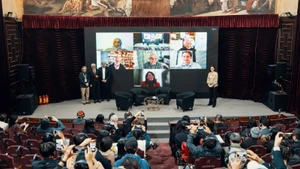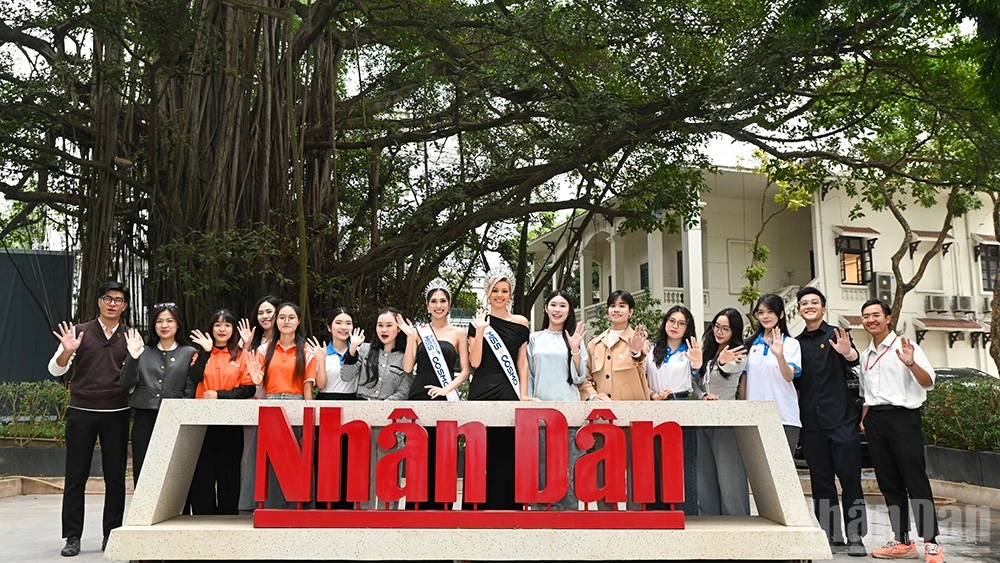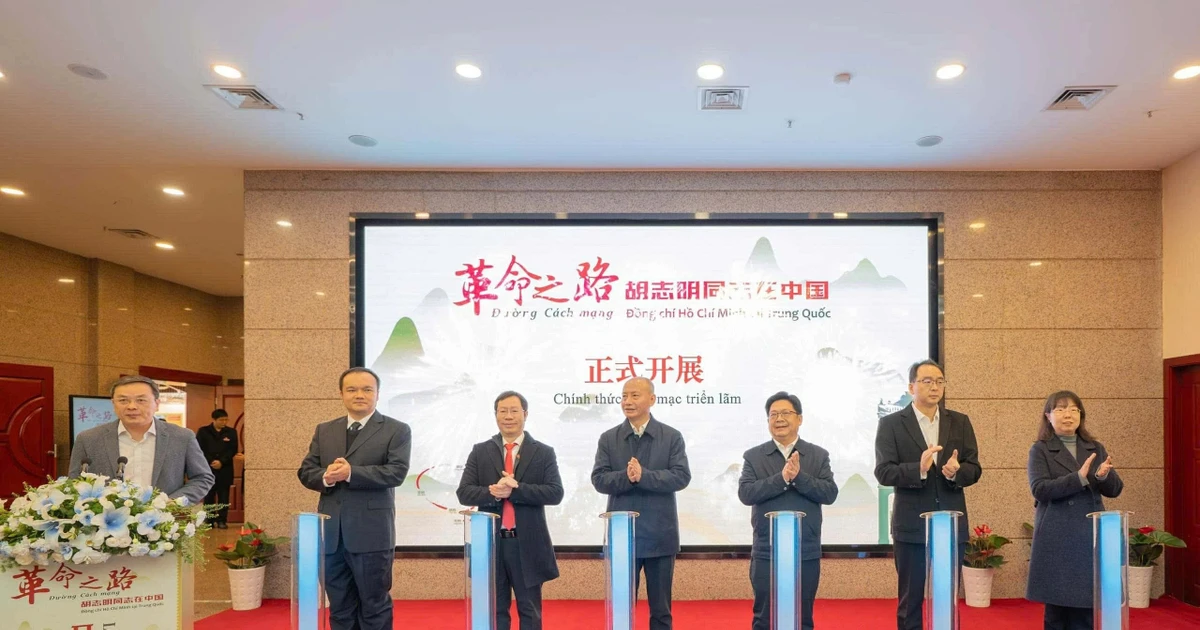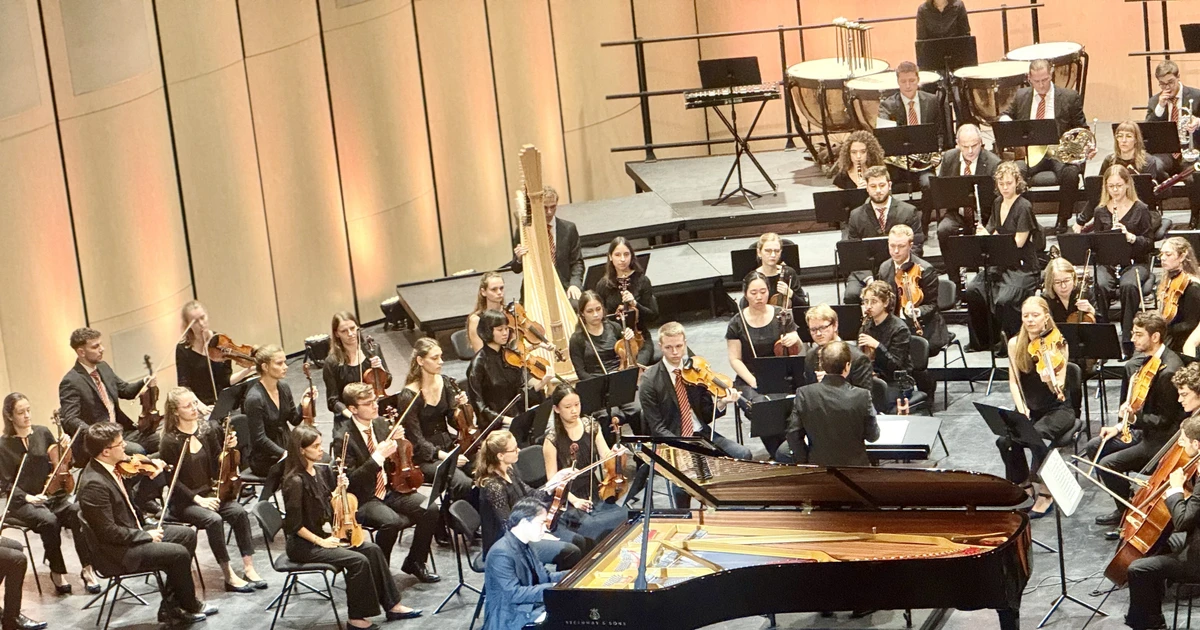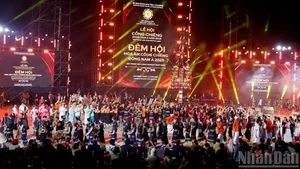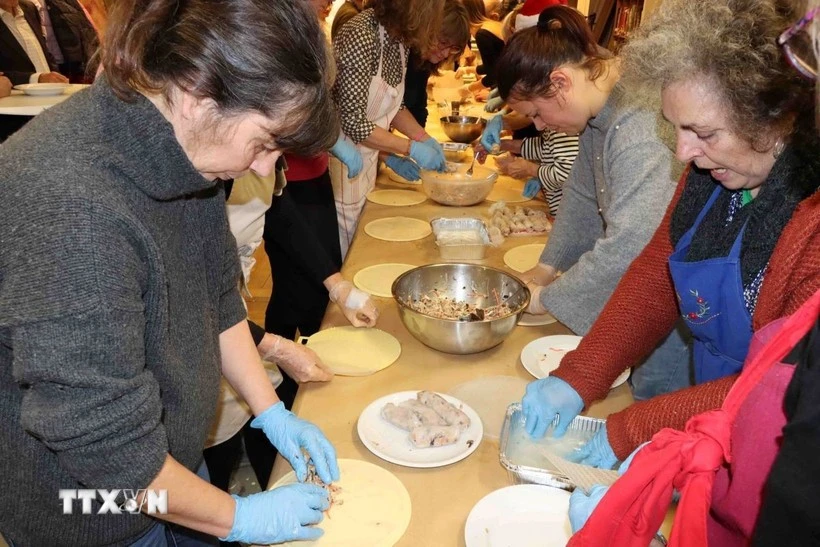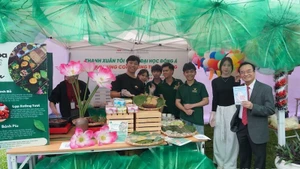More than 100 female diplomats, representatives of international organisations in Hanoi, and spouses of foreign ambassadors in Vietnam gathered at the event.
The event, entitled Following the Traces of Silk, has been organised by the Ministry of Foreign Affairs (MoFA) in collaboration with the Vietnam Sericulture Research Centre (VIETSERI) and the Vietnamese silk brand De Silk to celebrate International Women’s Day (March 8).
The event also aims to introduce to special guests the process of making Vietnamese silk.
Adorned in a Vietnamese ao dai (traditional Vietnamese dress), UN women representative Saenz emphasised the importance of culture in every society.
“Culture can transform societies into more inclusive, resilient and sustainable," she said. "Culture can also be a powerful tool to communicate complex truths about our existence better. It can open minds and hearts to understand diversity better and act against social injustices, inequalities, and climate change.”
The UN officer also said the Vietnamese government demonstrated a high commitment to placing culture at the heart of its ambitious development trajectory.
“Currently, there are eight [UNESCO] world heritage sites and 15 intangible cultural heritages in Vietnam," Saenz added. "This capture Vietnam's uniqueness and the country's laudable commitment to protect culture and heritage for future generations to enjoy.”
Since arriving in Vietnam five years ago, the UN officer has learned about the great beauty of this clothing and its prominence to those wearing it.
“Traditionally, the ao dai is made from silk, and as you know, silk has played an important role in the cultural and economic life of Vietnam," Saenz said. "It has also been linked to women's movements. For example, as the gender equality movement began to gain momentum in Vietnam in the early 20th century, silk production became a symbol of women's empowerment.
"Women involved in silk production organised themselves into cooperatives and used the income from their work to support social and political causes, such as education for girls.”
She said she hopes that Vietnam's silk production will continue to pave the way for greater gender equality and prosperity for all.
Delivering a speech at the event, MoFA deputy minister of the Le Thi Thu Hang said that since the special day [International Women’s Day] was founded 113 years ago, the international community had made great strides in protecting and upholding the role and contribution of women.
“The women ourselves also have changed in awareness and action to be more active in participating and contributing to society,” Hang said.
According to MoFA vice minister, in 2022 Vietnam was among the ten best countries in the world in implementing the United Nations' goals on gender equality and empowering women and girls.
“For the Ministry of Foreign Affairs, promoting gender equality and for the advancement of women is one of the major priorities," Hang said. "With the female staff accounting for nearly 47 per cent, female diplomatic personnel and spouses of diplomats is the core force that has been making important contributions in all fields of foreign affairs.”
At the event, the participants also had a chance to learn about the origin and development of Vietnamese silk weaving craft through a demonstration from the founder of the silk brand De Silk, Van Hang.
The guests also enjoyed visiting the VIETSERI mulberry field, where they picked with relish the ripe mulberries or fed the silkworm with mulberry leaves.
Some even sit by a loom to experience the weaving craft or to learn how the silk has been reeling.


